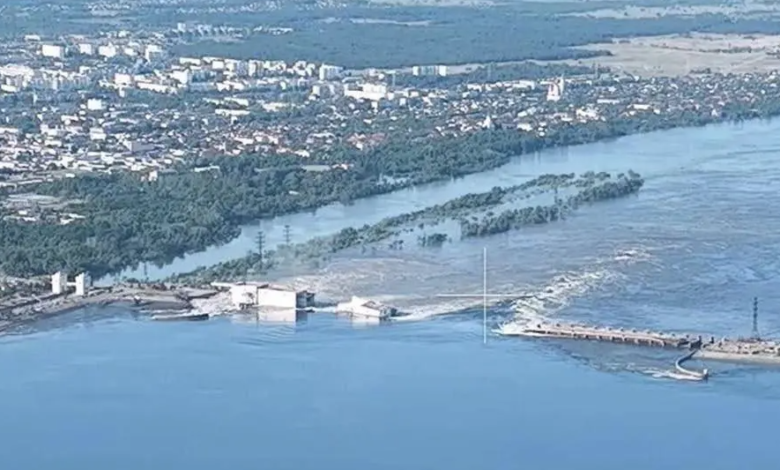Nova Kakhovka dam destroyed in Ukraine: fears of pollution and nuclear

Nova Kakhovka dam hit several times during the conflict
(sustainabilityenvironment.com) – During the night the Nova Kakhovka dam was blown on the Dnepr, one of the most important dams in Ukraine. The waters are pouring downstream and will lead to flooding on a very large area, both on the left bank (occupied by Russian forces) and on the right (in the hands of the Ukrainians). And with the floods come the dangers of pollution and, above all, of problems at the Zaporizhzhia nuclear power plant. The destruction of a dam, as well as causing deliberate damage to a nuclear power plant, are war crimes (Article 56, The Geneva Additional Protocol).
Liability
It is not yet clear who destroyed part of the Nova Kakhovka dam. The Ukrainians immediately pointed to Russia for “ecocide”. “Russian terrorists. The destruction of the dam at the Kakhovka hydroelectric power plant only confirms to the whole world that they must be expelled from every corner of Ukrainian territory. Not a single meter should be left to them, because they use every meter for terror. Only the victory of Ukraine will restore security. And this victory will come. Terrorists will not be able to stop Ukraine with water, missiles or anything else,” Ukrainian President Volodimir Zelensky tweeted.
Russian sources denied the damage for hours, reporting that the infrastructure was intact. A version provided both by state media (Tass, Ria Novosti) and by Mayor Leontyev in the immediacy of the event. The latter then corrected the shot after a few hours talking about a Ukrainian bombing that would destroy the hydroelectric plant but not the rest of the dam. From the videos that circulate online you can see a clear damage to the infrastructure, right in the part that housed the turbines of the plant. By 11 November 2022, Russian forces had damaged the dam, hitting the road above it.
The hypothesis of a structural collapse remains very probable. Due “only” indirectly to the conflict. In the last days the dam had recorded small collapses, again part of the road that overlooks it. And in May, the heavy rainfall had raised the levels of the reservoir considerably, increasing the pressure on the infrastructure.
The consequences of the destruction of the Nova Kakhovka dam
The dam is located about 30 km upstream of the city of Kherson. This is the first large urban center hit by the flood wave that is pouring downstream. According to a forecast model developed some time ago by the Swedish hydroelectric engineering company Dämningsverket, the flow of water could hit the Antonivsky bridge in Kherson with a wave between 4 and 5 meters high. The city will end up partly underwater, especially the port and the southern part. The wave will also swell some tributaries of the Dnepr, the Inhulets and the Bug, probably causing flooding in Mikolaiv as well. It will take several hours before the flood touches all these locations. Other predictions are more cautious and assume a smaller wave because the water will disperse laterally quickly.
It is difficult to estimate the impact of these floods. One of the greatest dangers is that industrial sites are also affected, with the risk of large-scale contamination of water and the surrounding area. Problems can also be found in the Crimea, as the Kakhovka Dam was crucial to provide water to the main channel that provides water supplies to the peninsula. Then there is the chapter Zaporizhzhia. The plant has been put in shutdown for a few months, that is, it no longer produces electricity. A choice dictated by the repeated clashes that affected the plant. Even in this state, however, the reactors are not inert and need water for cooling. The overheating of the core can lead to fusion resulting in the release of radioactivity. The flood could create supply problems to the cooling basins of Zaporizhzhia. Finally, downstream of the dam there are several sites of Community interest and protected areas, ecosystems that could be degraded by flooding.





